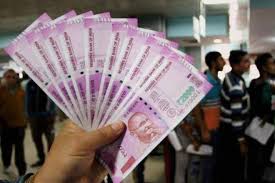The reason why several employees invest in VPF is that it provides the highest tax-free return on PF balance, backed by a sovereign guarantee.
The new provident fund (PF) interest rate rules that bring tax into the picture has made investors take a fresh look at the provident fund as an investment option. A comparison between EPF, PPF, and bank fixed deposits will show which of these investments is still a better option for you. All this because the new PF rule introduced recently could act as a dampener for some employees. If the total contribution towards the PF account exceeds Rs 2.5 lakh in a year, the interest earned on the excess amount will not be tax-exempt anymore. The interest earned on excess PF contribution will be taxed as bank FD.“Interest earned by the Employee Provident Fund from contributions above Rs 2.5 lakh a year will be added to the taxable income and taxed at the normal rates. This will only apply to the employee’s contribution and not that of the employer,” says Rajesh Bansal, MD, Midas FinServe, a financial services firm.
Many employees are contributing more than the statutory limit of 12 per cent of the basic pay towards their provident fund account. The rules allow an employee to contribute a higher percentage, however, the employer may not necessarily match the employee contribution. So, even while an employee contributes a higher amount towards PF, the employer may stick at 12 per cent of the basic salary.
The reason why several employees opt to invest in VPF is that it provides the highest tax-free return on PF balance, backed by a sovereign guarantee. For 2019-20, the PF interest rate for 2020-21 has been retained at 8.5 per cent as the previous year.
Other alternatives within the debt asset class could be Public Provident Fund (PPF), NSC, KVP, bank deposits or debt funds. The maximum amount that one can invest in PPF providing 7.1 per cent is Rs 1.5 lakh which for most such employees would have been exhausted. Bank deposits are currently offering interest rate of around 6.5 per cent and interest is taxable. For most of these employees, it might make sense to continue earning 8.5 per cent in PF as they are safest even though taxable for them. The post-tax return will be about 5.5 to 5.85 per cent for those paying tax in the highest income slab.
A word of caution! You can stop VPF contributions mid-way by intimating your employer but the money gets locked in till retirement. Other debt investments such as bank FD still provides liquidity to you.
Tax on PF interest income may make some employees consider exploring other opportunities as well. For those who are contributing up to Rs 20,835 a month towards PF are not impacted and may continue but others may also consider market-linked investments. One may also consider investing in NPS preferably in the equity fund option to save for their retirement. On retirement, only 60 per cent can be withdrawn as tax-free corpus while on balance compulsory annuity is to be received for a lifetime.
In addition to debt investments such as bank FD, PPF, an employee contributing higher than Rs 2.5 lakh a year may consider market-linked options especially less volatile liquid and debt funds. “Mutual funds offer a plethora of options and the investors can choose the best option based on their own financial needs and risk appetite. For starters, mutual funds have a wide array of equity, hybrid and multi-cap funds. Investors can also look at international investing with underlying exposure to international markets and commodities. In addition, there are also the dynamic equity funds and balanced advantage funds that have filled the gap between stability and risk-oriented products,” says Santosh Joseph, Founder and CEO, Germinate Investor Services LLP.





































